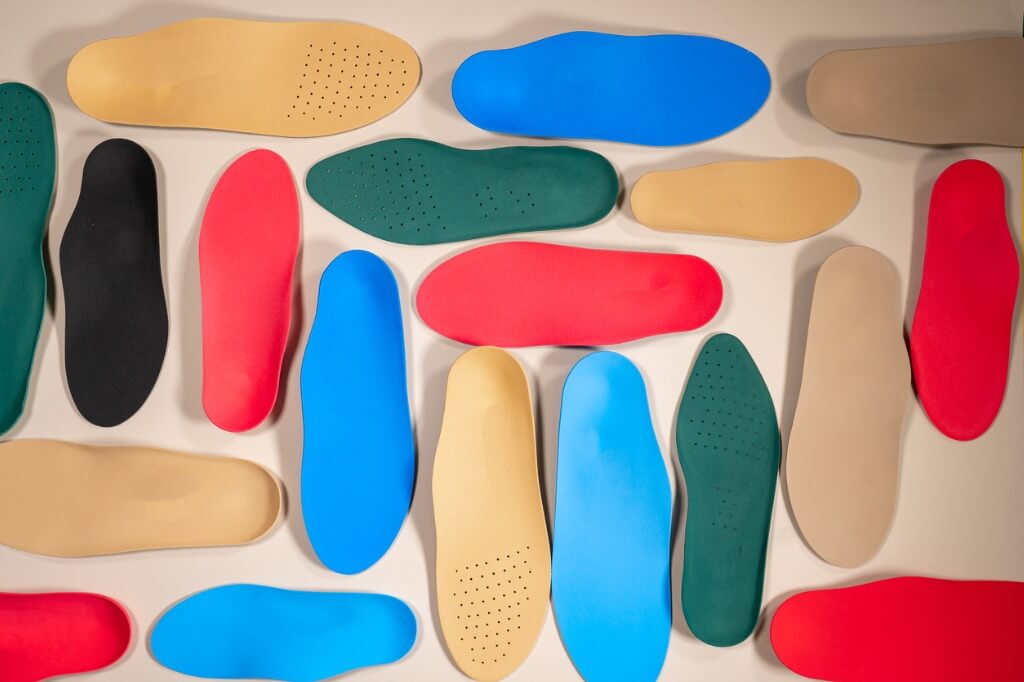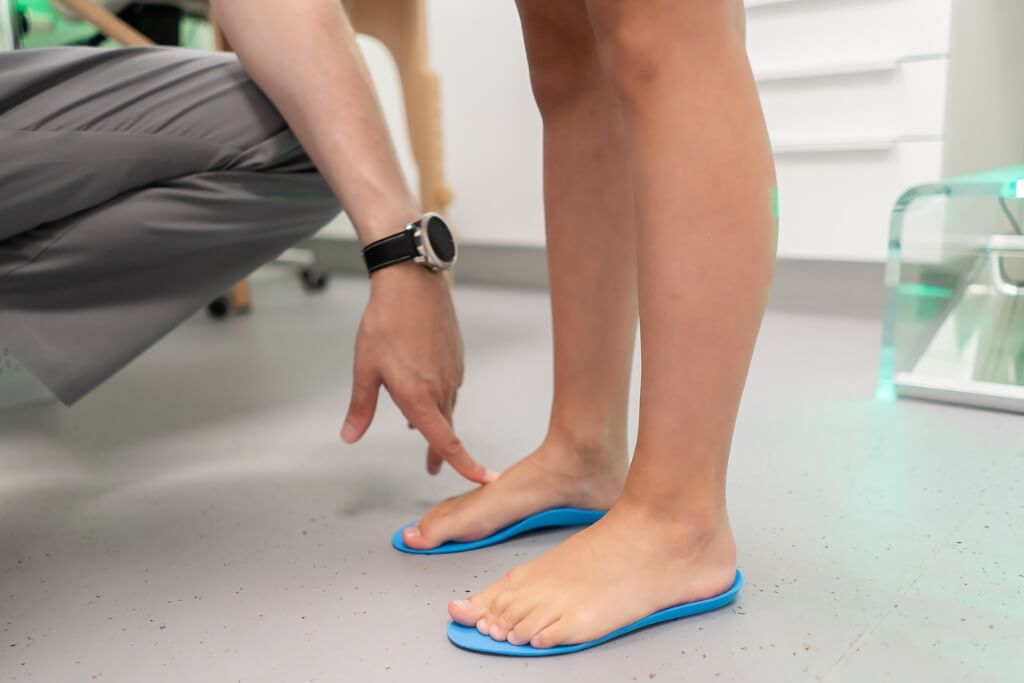Parents often walk into my clinic with their offspring in tow, worried about their child’s “flat feet” or “strange walk”. Usually, the appointment ends with me reassuring the parents that their child is growing well and developing strength in their feet and legs and that things are best left alone. However, if any pain is present or the alignment seems exceptionally off, we will consider treatment options. I want to share some warning signs for parents that indicate a pedorthic assessment may be necessary.

Most of the changes in a child’s feet occur before they turn six. Children are rarely treated until they are six or seven years of age unless they cannot walk because of other underlying factors. “Toe-walking,” where kids seem to be tiptoeing, is normal, and many kids develop great arch and calf strength with this gait pattern. Feet that appear flat are also likely in the process of developing arch strength and learning proper mechanics for walking and running. If this “flat-foot” appearance continues beyond six years of age, you may need to assess their gait.
Common Foot Problems Among Children
Assessing a child’s feet is necessary if they are experiencing pain. Even if “growing pains” was a phrase you grew up hearing, remember that pain is never “normal.” Often kids may not verbalise that they have “pain” as the sensation is foreign to them. One sign that a child may have discomfort with walking or running is when they avoid an activity they used to enjoy.
Just like adults, children too can be affected by poor biomechanics. The following lower limb and foot problems are among the most common among children:
Heel Pain – Sever’s Disease
Sever’s Disease is an irritation to the growth plate at the back of the heel where the strong Achilles tendon attaches. It’s often a sign that the child is in the midst of a growth spurt and is involved in excessive activity, irritating the heel.
Running and jumping sports tend to be the worst for creating pain.
Symptoms
- Pain, swelling and redness at the back of the heel
- Limited mobility due to the ongoing pain
Knee Pain – Osgood-Schlatter’s Disease
Osgood-Schlatter’s Disease is a condition that affects the area below and under the kneecap. It is one of the most frequent causes of knee pain in children and usually occurs in children between 10 and 15. It can also occur among younger children.
Symptoms
- Pain, swelling and tenderness just below the knee joint
- Children often signal trouble by rubbing their “shinbones”
Juvenile Rheumatoid Arthritis (JRA)
Usually seen in children under the age of 16, Juvenile Rheumatoid Arthritis (JRA) is the most prevalent form of juvenile arthritis. JRA is an autoimmune disorder, which means the body mistakenly identifies some of its cells and tissues as foreign.
Symptoms
- Persistent joint swelling, pain, redness
- Joint contracture/stiffness
- Possible growth problems
- Limited mobility, morning stiffness
- Affected joints may grow too fast or too slowly, making one leg or arm longer than the other

Does Your Child Need Foot Orthotics?
First, let’s define what foot orthotics are and what they do. Foot orthotics are custom-made insoles worn within shoes to gently correct any biomechanical issues with the feet and help keep them aligned in their neutral posture.
Several factors determine when orthotics are appropriate for children. First off, if the child is complaining of any pain or appears to be uncoordinated or tends to move differently from most other children, they would benefit from an assessment. Secondly, if a known hereditary problem exists, such as one or both parents requiring orthotics, the child may need early intervention as foot pathologies are often genetic. Another factor taken into account when examining children below seven is whether they are particularly sporty. If they are already involved in organised sports, more than simply running around a school playground, it would be beneficial to have a gait assessment. Often, orthotics are helpful during sports.
In most cases, young children do not need an orthotic for day-to-day activity. Following a gait assessment, we can determine the best route to alleviate pain or prevent more significant issues from developing. Often it is as simple as monitoring the child and reassessing their gait each year. If an orthotic is required to allow for pain-free activity, the pedorthist and parents will need to decide whether a custom orthotic or an “off–the–shelf” orthotic makes more sense.
For some diseases or injuries affecting children’s lower limbs, time and rest are the most critical factors affecting recovery. The condition will generally self-resolve as the child grows. Alternatively, if rest alone does not entirely correct the problem, other actions might be required:
Pedorthic Pointers for Patients
- Examination of the feet and lower limbs
- Custom-made foot orthotic or over-the-counter device
- Modification of the existing footwear
- Recommendation for appropriate and proper-fitting footwear
Seemingly simple changes, such as adding heel lifts to shoes, can reduce the strain on the back of the heel and ensure the foot is optimally aligned. This simple adjustment can ensure that movement at the knee is curtailed, allowing the child to return to regular, pain-free activity.
Essential Considerations When Buying Children’s Shoes
Footwear is often the best place to start, beginning with buying well-fitted shoes. It is not good to buy shoes that a child will “grow into.” A ‘too big’ shoe provides a sloppy fit and poor support, aggravating problems. Also, it is advisable to avoid hand-me-down shoes as the wear patterns created by previous owners may not provide the best support for your child.
Speaking with coaches and teachers about your child’s problem is required to identify whether you need to slightly modify the activity or introduce a stretching routine (an often overlooked area). If your child is experiencing problems, there are likely others in the same situation, but too often, nothing is said, and everyone suffers.
At the end of the day, before bed, icing the sore area is an excellent routine to employ, as it will help reduce any inflammation that develops over the day.
If the problems continue, seeing a Canadian Certified Pedorthist is the next best step. They may recommend an over-the-counter device or a custom-made foot orthotic to help relieve pain caused by injury or unusual alignment of the bones.
Footwear is a crucial component for anyone dealing with lower limb pain and injury. Your Canadian Certified Pedorthist can help determine an appropriate style and fit for your child’s condition.



